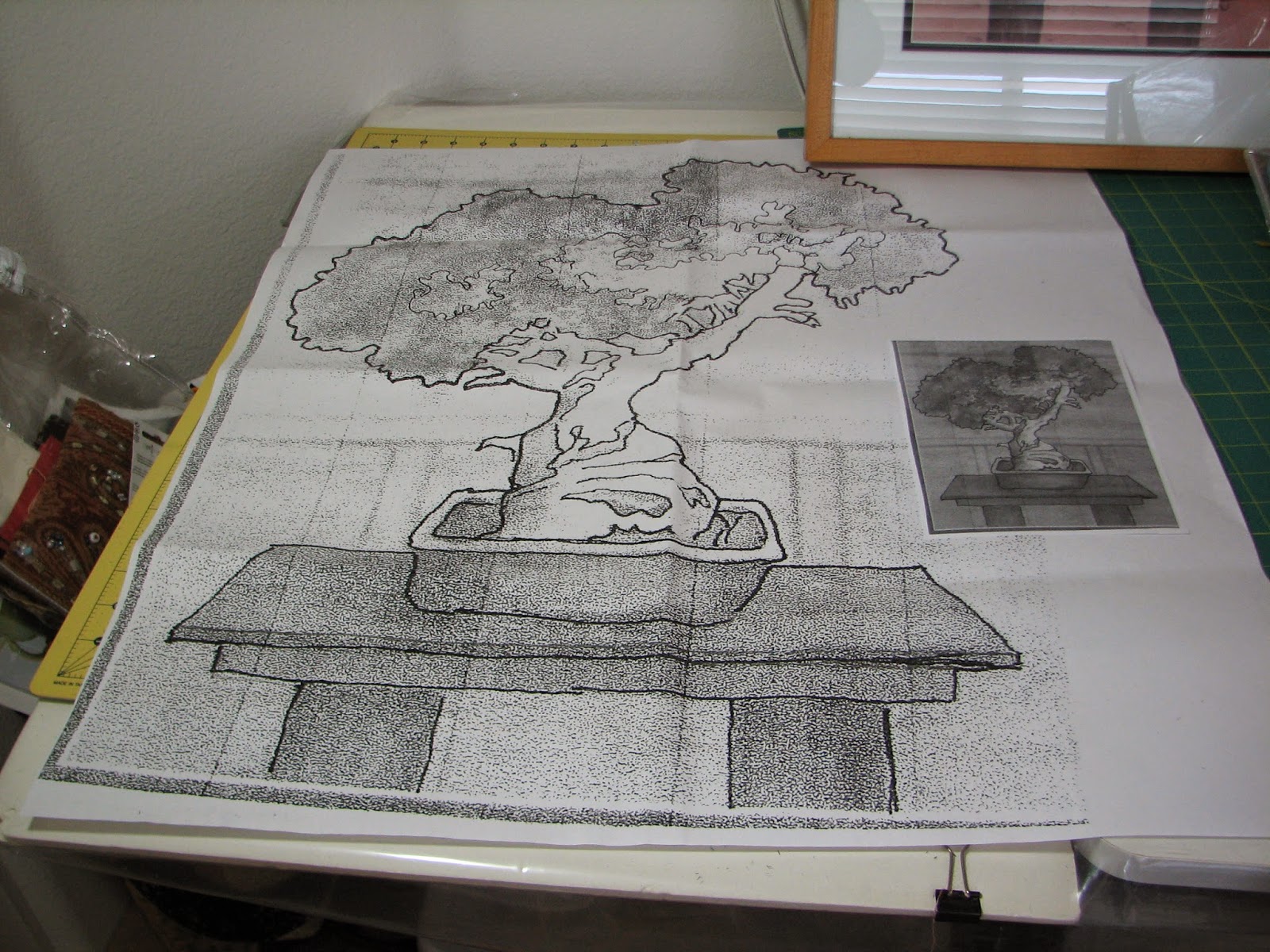My studio is a small bedroom in my home. I am not
complaining, because I realize that many people have less space than I do. I’m
very thankful for what I have. But nevertheless, I store a lot in that room and
use it for a wide variety of creative purposes. Given that, I need to maximize
the utility of every square inch! Here you can see that it's a bit crowded in there...
A design wall is essential to art quilting, I think. For
years I have been using a design wall that I would construct from stretcher
bars and batting. I didn't have the space to leave it up all the time, so it
would be up when I’m working on a project and then taken down. When it was up, I
was frequently moving it around the room in order to access the closet, or this
table, or that bookcase. It was inconvenient to say the least.
 |
| stretcher bars when being stored |
So recently I decided to make a design wall on one of my
sliding closet doors. The closet in my room has three sliding doors. The center
door does not slide behind the other doors, allowing things to be placed on it
without being knocked off when I slide the door. I have taped drawings to this
center door for a long time without any problem.
 |
| door before design wall |
I made the design wall out of insulation foam that I
purchased at Home Depot. Home Depot has various thicknesses of insulation foam
to choose from. I used a foam that is about 1.5 inches thick. I could have
purchased a large sheet of it for less money than I spent, but the large sheet
would not fit in my car. Instead I
purchased several two foot by two foot squares of the insulation foam. My door
is three feet wide, so I cut some of the insulation foam sheets down the middle
to make one foot by two foot sections. I placed a two foot by two foot piece
next to a one foot by two foot piece to cover the width of the door. I covered
most of the door this way, ending up with a three foot by six foot design wall.
The foam sheets were taped to the door using mounting tape.
This tape is double sided and rated to support a heavier weight than the foam
and anything I will ever pin to it.
 |
| mounting tape |
After the foam was mounted on the door I covered it with
white flannel. I simply pinned the flannel to the foam so that I could remove
it for laundering when needed. Here is the design wall on the door with some photos pinned to it:
 |
| design wall on door |
I liked the wall on the closet door so much I decided to add
a smaller version to the back of another door in the room. It is incredibly convenient
now to pin fabric, photos, drawings and other things up in an instant. I got
this all done in one day too. It is a great improvement over what I was using.
I hope this gives you some ideas of how to better use your
space.
Thanks for visiting my blog!
.JPG)
.JPG)







.jpg)
.jpg)








.JPG)





















.JPG)



.JPG)
.JPG)